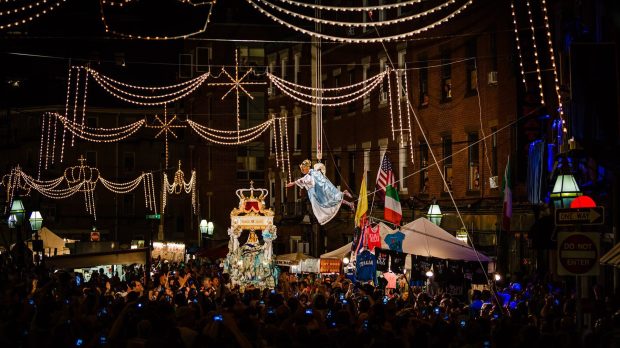With the recent news that Pope Francis has elevated the liturgical commemoration of St. Mary Magdalene to the status of a feast, we’ve been hearing some confusion:
When will this new feast day be? Didn’t she already have a feast day? Why is this news?
So here’s a quick guide to help you sort out the difference between a feast day and a liturgical feast.
In popular terms, a Catholic feast day is any day when we remember and celebrate something or someone important to our faith. The word feast comes from the Latin festes, meaning “joy.” It denotes a time of celebration (and, by association, the bountiful food and drink with which a joyous occasion is celebrated). In the particular way that Catholics, like our Jewish ancestors in faith, hallow the calendar, a feast day is any time when the remembrance of the deeds of salvation and the people inspired by them breaks through into the dailyness of life.
So Catholics have a year of feast days in this general sense, anchored of course by Sundays, the pre-eminent feast day. We have holy days of obligation and saints’ days and days devoted to particular expressions of God’s love in the lives of Jesus and his mother, Mary.
Yes, then, St. Mary Magdalene already had a feast day – July 22. The new announcement doesn’t change that date.
More to read: Mary Magdalene: A Heart Close to Christ
But it’s important to remember that Catholic feast days have a formal liturgical dimension. And in that sense, not all feast days are “feasts.” Based on the level of significance in the life of the universal Church, various feast days fall into a hierarchy of importance. There are actually three levels of feast day, each with its own liturgical form.
Solemnities
At the top of the feast-day hierarchy are the solemnities – celebrations that mark the most significant events in the life of Jesus, his Mother, and those most closely united to him in the work of salvation, such as St. Joseph, St. John the Baptist, and Sts. Peter and Paul. Solemnities take precedence over other liturgical celebrations except the Sundays of Advent, Lent, Holy Week, and the Easter season, when they are generally transferred to the following Monday.
Some solemnities – the Nativity of the Lord (Christmas), the Resurrection (Easter), the Immaculate Conception of the Blessed Virgin Mary – are celebrated as holy days of obligation (though with the exception of Christmas and Easter, this is up to local ordinaries to determine); many are not. When you attend Mass on a solemnity, there will be three readings and the Gloria (even during Advent and Lent) and the recitation of the Creed, just as at a Sunday Mass. When a solemnity falls on a Friday, the obligation to abstain from eating meat or to perform another act of penance is dispensed in favor of the celebration.
We’re referring here, just to be clear, to the Church’s universal calendar. Some feast days are celebrated as solemnities in local areas or among particular religious communities. For example, the feast day of a community’s founder may be celebrated as a solemnity in that community’s houses.
Memorials
At the bottom of the feast-day ladder are memorials, the most common way in which the Church remembers saints and events at Mass and in the Liturgy of the Hours. Memorials may be liturgically “obligatory” – the special two readings and prayers (no Gloria) of the feast day must replace the regular readings and prayers at Mass and in the Liturgy of the Hours – or liturgically “optional,” in which case it’s up to the pastor or celebrant. A Sunday, a solemnity, and a feast (see below) all take liturgical precedence over a memorial. Up till now, June 22 has been the (obligatory) memorial of St. Mary Magdalene.
Feasts
In the middle are feast days that are feasts. These commemorate events in the life of Jesus – the Transfiguration, for example – that are of lesser significance than those marked by solemnities, some feast days of Mary, and the feast days of Apostles, Evangelists, and key figures of the early Church such as St. Lawrence the deacon. Two readings, special prayers (including, in the case of St. Mary Magdalene, a special Preface newly composed for this feast), and the Gloria are part of the liturgical celebration of a feast. Only feasts of the Lord supersede the Sunday liturgy. This level of feast day will now be celebrated to commemorate St. Mary Magdalene, “apostle to the apostles” and evangelist of the Resurrection. In a sense, then, she’s received a liturgical promotion.
That’s news!
More to read: Mary Magdalene in Fine Art

